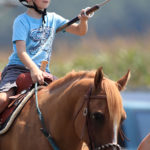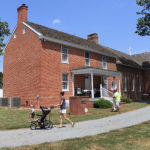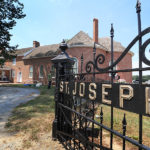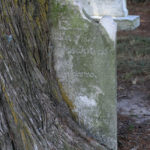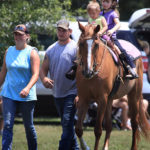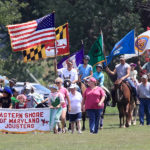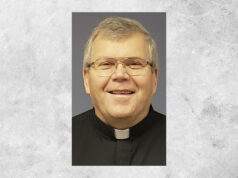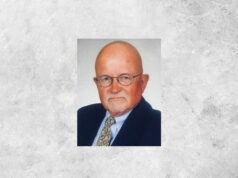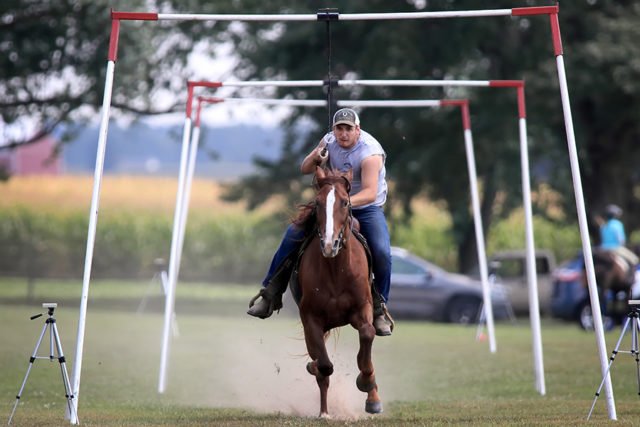
CORDOVA, Md. — The tradition continues.
For the 151st year, the ring jousting tournament and horse show was held at St. Joseph’s Church in Cordova on Aug. 7. The tradition nearly ended because parishioners were growing older, but a new partnership between the church and the Eastern Shore Jousting Association allowed the event to continue.
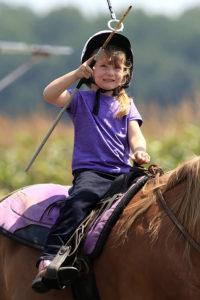
The tournament isn’t quite as old as the church, generally known as Old St. Joseph’s, which dates to 1765, but it was hard to take a step which wasn’t steeped in centuries of history on this Wednesday afternoon. Ring jousting is considered the official state sport of Maryland and its history is believed to have even included tournaments at Monticello. Ring jousting involves riders galloping toward and spearing three rings hanging from a cord. There are three runs, giving each rider a possible score of nine rings. Rings are one-and-three-quarter inches in size for the beginner. They become smaller as the classes advance. It’s an 80-yard long course, and more advanced riders must complete it in less than eight seconds, riding hard as they stand in the stirrups.
It’s a sport where man and horse have to be in tune in order to have any chance of success. One bystander said it takes about five years to really train a horse. He said the horses have to be trained to not spook at the clang of the rings near their heads.
The annual horse show and joust is a chance to meet and enjoy a day in the country. The church is on a country road (Church Lane) flanked by fields of tall corn. The church itself is at the end of a long lane. People come for the horse show, the bake sale featuring beaten biscuits (a local Maryland delicacy) and triple chocolate cake, and a chance to pitch dimes or spin a wheel for prizes.
Spectators set up lawn chairs under the oak trees, pitch small tents to keep out the August sun and catch up with each other.
“It has always been a community get-together,” said Mike Boyle, who helped run the event for about 40 years.
There’s a $1 raffle with the top two prizes being beautiful quilts, one of them an antique.
Then, there is the country dinner. People feast on country ham, barbecued chicken and all the fixings, including beets, applesauce, tomatoes, potato salad, green beans and rolls. There is so much food that announcers were trying to entice people to buy bags of beets or potato salad to take home. For lighter appetites, ham sandwiches and hot dogs are for sale.
Jousting is a sport synonymous with Maryland history, according to the Maryland Jousting Tournament Association website. It has survived in Maryland since the founding of the original colony.
“The people of Maryland enjoy this sport because of its colorful, friendly, traditional aspects. Men, women and children participate often in the same classes, and always under the same set of standard rules,” according to that website. “A Maryland Jousting Tournament is unique in its own right, and depicts the motto of the Seal of Maryland and is indeed a sport of ‘manly deeds and womanly words.’”
During a special February session of the Maryland legislature in 1962, Henry Fowler Sr., delegate from St. Mary’s County, introduced a bill into the Maryland House of Delegates giving recognition to the sport of ring jousting as the official state sport of Maryland. This bill passed both chambers of the legislature by an overwhelming vote and was signed into law by Gov. J. Millard Tawes. Thus, as of June 1, 1962, Maryland became the first state in the United States to adopt an official state sport.
The sport has survived challenges from both duckpin bowling and lacrosse to remain the official state sport. One of the purposes of the Maryland Jousting Tournament Association is “to make every effort to keep alive the quaint, colorful, ancient traditions of the Age of Chivalry which are associated with the sport, and to do as much as possible to make it unique in its own right,” the website says.
Those traditions become obvious very quickly at a tournament. Simply listen to the announcers and you will hear them refer to fair maids and sir knights. “The course is clear. The rings are hung. Charge fair maid (or sir knight), charge,” was the call from the announcers.
The joust begins with a parade of young people in medieval dress carrying a banner. Flags are carried and planted, and the national anthem is played.
There’s no combat or damsels in distress, but the horsemanship remains very impressive. For youngsters in the lead class, the charge amounted to a slow walk as the horses were led through the course. Some competitors were barely big enough to be noticed, but they are received a round of applause from a gracious audience.
As the classes progressed, that slow walk soon turned to a full gallop for more advanced riders.
The event has been continuous except for 1918, when it was canceled because of the shortage of riders during the First World War, according to the event program.
“Time will tell,” Boyle said with a smile as he was asked if there will be another 150 years.
Father James Nash, pastor of St. Joseph, a mission of Ss. Peter and Paul in Easton, could not attend, but sent a prayer and a message to the spectators.
Tournament chairman Paul McMullen said the jousting has gone on for “years and years.” He said he wasn’t sure how this year would turn out, but “it seems pretty good. … We want it to continue for years to come.”




